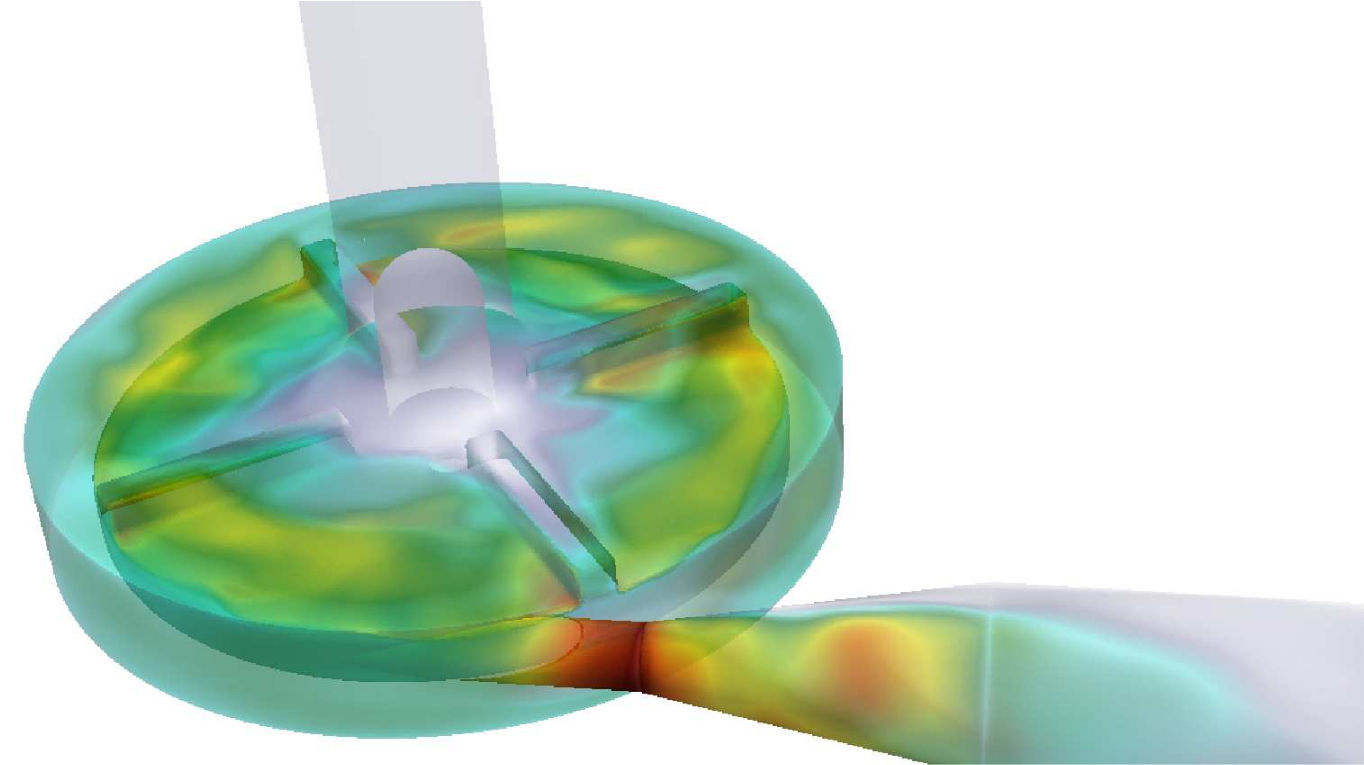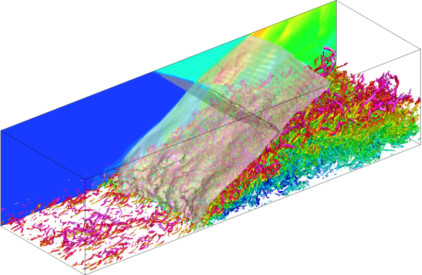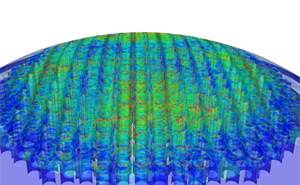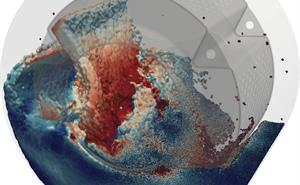The Engineering group develops and uses a wide range of scientific software in order to solve engineering problems of interest to academia and those faced by industry. The group has a varied and wide selection of skills and research expertise ranging from the use of computational fluid dynamics to study flow past an object through to the use of stochastic methods for understanding rarefied gas dynamics or the use of molecular dynamics to study how carbon nanotubes can be used for desalination. The use of the latest in high-performance computing is paramount to the work we do, especially as our efforts are focused by the new age of the digital product. Since 2008 the group has obtained over £7m in direct funding from various sources.
To work with the group or for further information about what we do, please contact Professor David Emerson
Understanding Complex Fluid Physics for Engineering
We work on computing the physics needed to understand complex engineering problems. The group specialises in fluids but aims to understand all physical phenomena needed to solve the varying engineering challenges we tackle. We work in collaboration with both academia and industry and aim to form lasting working relationships.
The group has specialisms in various areas of macroscopic modelling including computational fluid dynamics (CFD), turbulence (i.e. RANS, LES), aero-acoustic, thermal and combustion modelling. We also have expertise in phenomena such as rarefied gas dynamics and fluid properties where macroscopic techniques break down, with understanding in areas such as kinetic theory, dissipitive particle dynamics and molecular dynamics.

| 
|
High-fidelity simulation of a centrifugal blood pump
| Turbulent flow past an object using high-order DNS and LES
|
We also have expertise in non-traditional computational methods, for example solving CFD problems using mesh-less methods such as smoothed particle hydrodynamics or alternative approaches like the Lattice-Boltzman method.
Relevant publications:
K. Zografos, R. W. Barber, D. R. Emerson, M. S. N. Oliveira, A design rule for constant depth microfluidic networks for power-law fluids. Microfluidics & Nanofluidics, 19: 737-749, 2015, DOI: 10.1007/s10404-015-1598-9
B. John,
X. Gu, R. W. Barber, D. R. Emerson, Numerical
Investigation of High Speed Rarefied Flow Past a Rotating Cylinder:
the Inverse Magnus Effect, AIAA Journal, 54: 1670-1681, 2016, DOI: 0.2514/1.J054782
S. M. Longshaw, B. D. Rogers, Automotive fuel cell sloshing under temporally and spatially varying high acceleration using GPU-based Smoothed Particle Hydrodynamics (SPH), Advances in Engineering Software, 83: 31-44, DOI: 10.1016/j.advengsoft.2015.01.008.
Key software: Code_Saturne, DualSPHysics, DL_MESO, OpenFOAM
Multi-physics & Multi-scale Simulation
The challenge of the digital product drives much of the groups work, therefore a key goal is to not just understand a single aspect of the physics of a problem but to understand what different types of physics and length-scales are involved and how they interact to form a single system. We are actively engaged in developing methods and software to enable the coupling of high-performance HPC enabled solvers to find solutions in important sectors like the nuclear, aerospace and automotive sectors.

|
Coupled CFD and conjugate heat transfer simulation of the Hot Box Dome section of a nuclear reactor
|
Relevant publications:
X.
Gu, D. R. Emerson, A high-order moment approach for
capturing non-equilibrium phenomena in the transition regime, Journal
of Fluid Mechanics, 636: 177-216, 2009, DOI: 10.1017/S002211200900768X
J. Meng, Y. Zhang, X. Shan, Multiscale lattice Boltzmann approach to modeling gas flows, Phys. Rev. E, 83(4): 046701, 2011, DOI: 10.1103/PhysRevE.83.046701
J. C. Uribe, C. Moulinec, M. Rabbitt, R. Howard, D. R. Emerson, LES of the flow inside the lower plenum of an advanced gas-cooled reactor with conjugate heat transfer, Procedia Engineering, 61: 192-197, 2013, DOI: 10.1016/j.proeng.2013.08.002
S. M. Longshaw, A. Skillen, C. Moulinec, D. R. Emerson, Code Coupling At Scale: Towards The Digital Product, Advances in Parallel, Distributed, Grid and Cloud Computing for Engineering, Peter Iványi, B.H.V. Topping, G Várady (Editors)
Saxe-Coburg Publications, 2017, ISBN 978-1-874672-72-2
Key software: Code_Saturne, Syrthes, mdFoam+, dsmcFoam+, Multiscale Universal Interface
High Performance Computing
Underpinning all of our work is the need for understanding the latest trends in high performance computing (HPC) and how best to utilise them when finding solutions to engineering problems. We utilise and develop computational solvers on existing and emerging HPC resources both within STFC and around the world. We have expertise in large-scale distributed and shared memory parallelism, as well as GPU, Xeon Phi and other accelerator use.

|
Fluid sloshing in the drum of a washing machine simulated using GPU based smoothed particle hydrodynamics (SPH)
|
Relevant publications:
C. Moulinec, J. C. Uribe, J. Gotts, B. Xu, D. R. Emerson, Sleeve leakage gas impact on fuel assembly temperature distribution, International Journal of Computational Fluid Dynamics, 30(6): 419-424, 2016, DOI: 10.1080/10618562.2016.1218481.
Key software: Code_Saturne, DualSPHysics, DL_MESO
